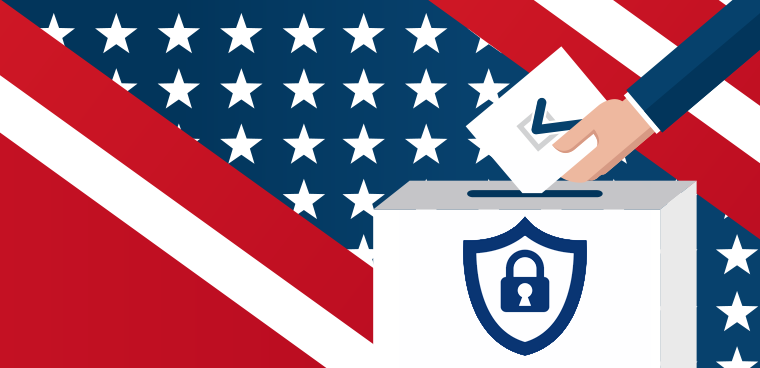Three states responsible for half of all paperless e-voting machines in 2018, survey finds

Policymakers and experts know that paperless DRE voting machines are confined to a small number of states, but new survey results demonstrate just how concentrated the problem is.

Lawmakers and election security experts have focused much of their energies over the past two years on doing away with paperless Direct Recording Electronic voting machines.
While such machines are not inherently more vulnerable to being hacked than other types of voting equipment, information security experts say they represent a unique threat because if compromised, they have no backup paper trail that officials can use in audits to detect discrepancies and determine an accurate vote count.
Survey results from the Election Assistance Commission showed that just three states -- Pennsylvania, Georgia and Texas -- were responsible for more than half of all DRE voting machines without voter verified paper trails used across the nation in 2018.
The latest Election Administration and Voting Survey released June 27 also showed that 202,599 of the nation's 334,422 voting machines used in the 2018 election were DRE machines. About one third (67,535) of those machines had paper backups in place, but 135,064 did not.
Pennsylvania Governor Tom Wolfe (D) ordered all counties to buy new machines with auditable paper trails in February and is currently negotiating with Republicans in the state legislature for a funding package to cover a portion of the cost, estimated to be around $125 million. Texas and Georgia officials have thus far refused to target their paperless DRE machines for removal, and voting groups in Georgia have taken the state to court to force the issue.
Who pays and how those costs get split between the federal government and states remains subject to debate. State election lobbying groups have argued that if Congress wants state officials to replace paperless DRE machines, they should provide federal funding to do so. Congress made a down payment in 2018 in the form of releasing $380 million in leftover Help America Vote Act grants to states, but the amount awarded to each state was based on per capita, not need, and there were no mandates that the money be spent for election security or to replace voting machines.
That pot of money is considered a fraction of the estimated costs needed to completely wean the country off paperless voting machines, let alone tackle other needs like increased security trainings for poll workers, postelection audits and cybersecurity updates to voter registration systems, e-pollbooks and other election software systems.
The Financial Services and General Government appropriations bill passed by the House June 26 contains $600 million in new election security grants that mandate hand-marked paper trails for newly purchased voting machines along with risk limiting postelection audits, but Republicans have said Senate Leader Mitch McConnell (R-Ky.) is refusing to bring election security bills to the floor and the White House opposed the new funds in the House bill, calling them "unrequested."
"States have only begun to expend the $380 million received for election security grants in FY 2018," the White House wrote in a statement of administration policy on the House funding bill. "Additional support from the federal government should only be provided once existing funds have been deployed."
House Democrats also passed a standalone bill June 27 that would inject $1.3 billion in election security grant funding to states through 2026, which McConnell has called "a non-starter" in the Senate.
Thirty-six states have laws in place requiring post-election audits, but only a handful conduct risk-limiting audits, widely considered to be the most accurate way to determine if a machine's electronic vote tallies match up with those from corresponding paper ballots. Jennifer Morrell, an election validation consultant for the non-profit group Verified Voting, said that the new EAC survey contains a rich dataset about how voting Is conducted at the individual state and county level that election officials can use to make their system more-friendly to risk limiting audits.
"Understanding through the EAVS survey these different types of methods of casting a ballot and how its processed really helps us determine the resources and the guidelines and the things that we need to do to help election officials move to that more robust audit," said Morrell at a June 27 event hosted by EAC.
NEXT STORY: How Some Agencies Are Rethinking Transparency


